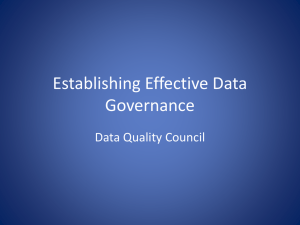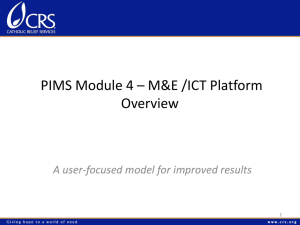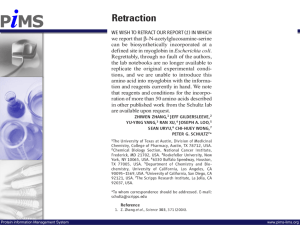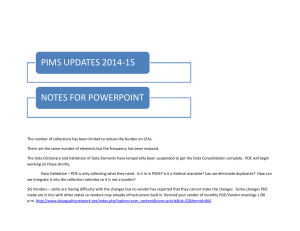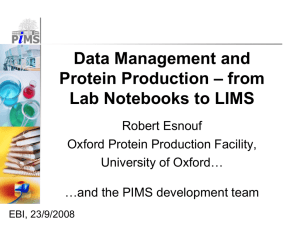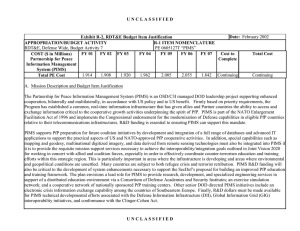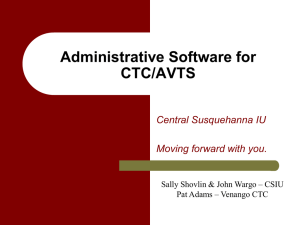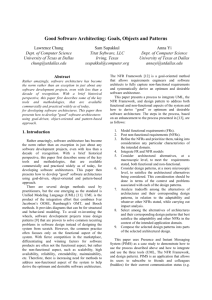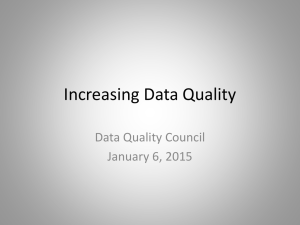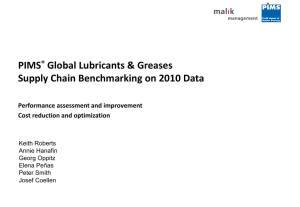PIMS Basics: Who Reports What to Whom and How Data is Used
advertisement
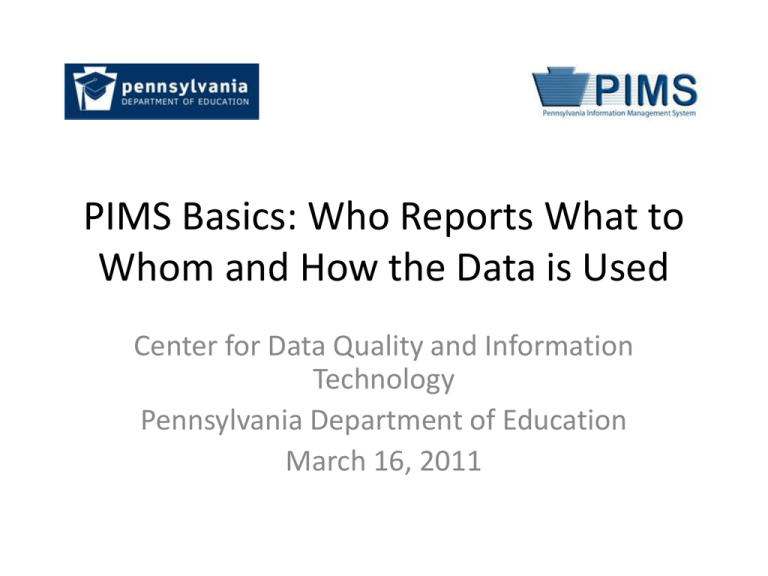
PIMS Basics: Who Reports What to Whom and How the Data is Used Center for Data Quality and Information Technology Pennsylvania Department of Education March 16, 2011 Agenda • • • • • • • • PIMS Basics PIMS Benefits Who Reports What? 2010-11 PIMS Data Collection Summary How is the Data Used? Tools and Support Available to LEAs Q&A Thank You! 2 PIMS Basics • PIMS is PDE’s student-level data collection and reporting system – Designed to improve student achievement through more efficient and effective use of data – First implemented in SY 2007-08 • PIMS collects 11 types of data (or data domains)… – Student, Enrollment, Course, Groups and Programs, Career and Technical Education, Discipline, Special Education, Child Accounting, Staff, District, Location – Assessment data is also loaded directly from DRC • At various times per year from approximately 800 LEAs… – 500 School Districts, 119 Charter Schools, 29 Intermediate Units, 73 Career and Technical Schools (vo-techs), 34 Approved Private Schools, 24 Private Residential Rehab Institutions, 12 State-owned Juvenile Corrections and Special Programs Jointures 3 PIMS: One System, Many Collections PIMS 4 PIMS Benefits • Simplified and standardized data collection process for LEAs and PDE • Strengthened data integrity and improved data quality for LEAs and PDE • Allowed PDE to retire 9 data collection systems to date • Improved state and federal reporting • Provides enhanced analysis capabilities, including trend analysis on longitudinal data 5 Who Reports What? • Depends on the data collection • Refer to the user manual; contains details on who reports what and when The data collection details (timing, templates included, etc.) are defined in the beginning of the 6 manual. At the beginning of each domain the user manual specifies which LEA types the domain applies to. 2010-11 PIMS Data Collection Summary Data Collection Period Reporting Window Data Collection Purpose Who Reports October 2010 10/1/2010 – 10/29/2010 Enrollments, graduates and dropouts SD, IU, CTC, CS, SJCI, PRRI, APS November 2010 11/15/2010 – 12/8/2010 Pre-code for PSSA and PASA assessments SD, IU, CTC, CS, SJCI, PRRI, APS December 2010 12/1/2010 – 12/10/2010 Special Education SD and IU January 2011 1/4/2011 – 1/28/2011 Professional Staff SD, IU, CTC, CS, SJCI February 2011 2/1/2011 – 2/24/2011 Highly Qualified/course SD, IU, CTC, CS, SJCI 7 2010-11 PIMS Data Collection Summary (cont’d) Data Collection Period Reporting Window Data Collection Purpose Who Reports March 2011 3/9/2011 – 3/31/2011 ACCESS for ELLs SD, IU, CTC, CS, SJCI, Demographic Refresh PRRI, and APS April 2011 3/14/2011 – 4/15/2011 PSSA/AYP June 2011 6/1/2011 – 6/30/2011 Safe Schools, includes SD, IU, CTC, CS School Safety personnel Summer 2011 7/14/2011 – 9/13/2011 Career Technical Education CTC July 2011 7/15/2011 – 7/22/2011 Special Education SD and IU Child Accounting 2011 7/14/2011 – 9/30/2011 Subsidy SD, IU, CTC, CS, PRRI, APS 8 SD, IU, CTC, CS, SJCI, PRRI, APS How is the Data Used? • Federal reporting – – – – Highly Qualified Teacher Career and Tech CAR reports EDFacts reports (LEP, Safe Schools, etc.) Federal Directory of Designated Low-Income Schools (impacts eligibility for the Federal Teacher Loan Forgiveness Program) • State reporting – School Safety – Student Mobility – Enrollment Projections • • • • Pre-code for PSSA and PASA Child Accounting (drives subsidy) Input to AYP process Identify Highly Qualified Teachers; compare results for high and low poverty schools • Calculate the cohort-based graduation rate • Calculate dropout rates • Provide aggregate data to the public 9 Tools Available to LEAs • PIMS Web Site – – – – Data collection details ACS report due dates Webinar schedule User manual, training and other useful documents • PIMS User Manual – Data collection details • Who reports • What to submit • When to submit – Template and field details – FAQ’s • Access Database for LEA’s that don’t have a commercial SIS 10 Support Available to LEAs • Training – Semi-annual web-based refresher training on PAsecureID, Data Manager and Cognos offered – Multiple trainings conducted during every collection window specific to the data collection emphasizing what to submit, by whom, how to submit, how to avoid common errors, data quality reports, FAQ’s – Frequent (weekly or bi-weekly) PIMS Q&A sessions offered – Recordings of all trainings and Q&A sessions available • PIMS Help Desk – Questions/Issues (what to report, help with data submission errors, issues with ACS reports, questions on data definitions, etc.) – 1-800-661-2423 or on-line – An average of 1,100 help requests per month 11 Q&A 12 Thank You! Thank you for continuing to be diligent in the submission of high quality data to PIMS. LEAs have been and will continue to be the key to PIMS’ success. 13
